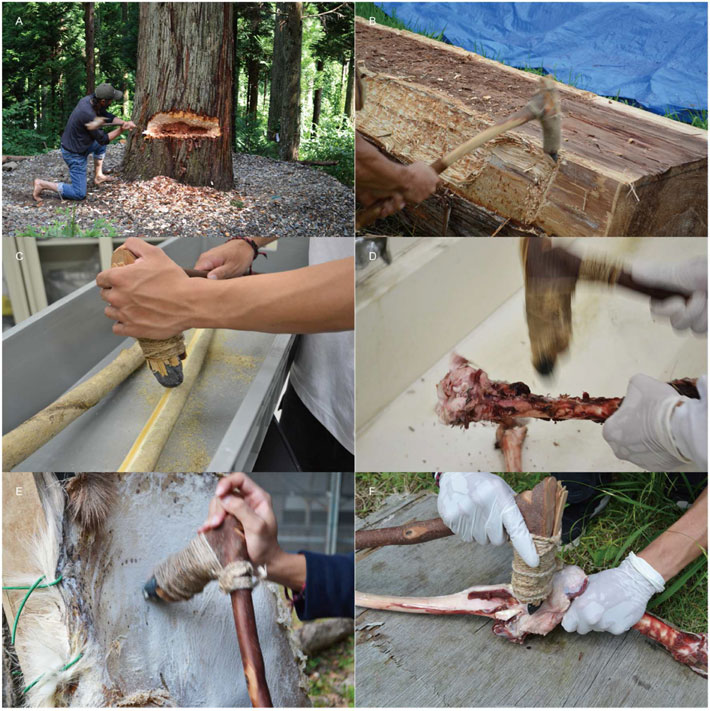 TOKYO, JAPAN—According to a Cosmos Magazine report, Akira Iwase of Tokyo Metropolitan University and his colleagues made 75 replica ax heads and adzes with a stone hammer, anvil, and grindstones from semi-nephrite collected in Japan’s Matsukawa River and Oumigawa River; hornfels from the Abo River on Yakushima Island; and tuff taken from the Fujikawa River. Thin strips of wood and fibrous grass were used to bind the stones to wooden handles. The tools were then tested in 15 different activities, including felling trees; shaping and scraping wood, antler, bone, and hides; and butchering animal carcasses. The macroscopic and microscopic wear marks on the tools were then recorded over the course of the experiments. The researchers also noted wear and tear on the stones that occurred during the manufacturing process, sharpening, transporting them in a bag with other tools, and trampling. Four of the axes remain unused for comparison. Iwase and his colleagues identified nine different types of fractures in the tools that resulted from different uses. The analysis could help future researchers determine how stone artifacts were used, and if early humans were able to fell and shape timber, which rarely survives in archaeological sites. Read the original scholarly article about this research in Journal of Archaeological Science. To read about shell fishhooks uncovered in a cave in Okinawa, go to "Japan's Early Anglers."
TOKYO, JAPAN—According to a Cosmos Magazine report, Akira Iwase of Tokyo Metropolitan University and his colleagues made 75 replica ax heads and adzes with a stone hammer, anvil, and grindstones from semi-nephrite collected in Japan’s Matsukawa River and Oumigawa River; hornfels from the Abo River on Yakushima Island; and tuff taken from the Fujikawa River. Thin strips of wood and fibrous grass were used to bind the stones to wooden handles. The tools were then tested in 15 different activities, including felling trees; shaping and scraping wood, antler, bone, and hides; and butchering animal carcasses. The macroscopic and microscopic wear marks on the tools were then recorded over the course of the experiments. The researchers also noted wear and tear on the stones that occurred during the manufacturing process, sharpening, transporting them in a bag with other tools, and trampling. Four of the axes remain unused for comparison. Iwase and his colleagues identified nine different types of fractures in the tools that resulted from different uses. The analysis could help future researchers determine how stone artifacts were used, and if early humans were able to fell and shape timber, which rarely survives in archaeological sites. Read the original scholarly article about this research in Journal of Archaeological Science. To read about shell fishhooks uncovered in a cave in Okinawa, go to "Japan's Early Anglers."
Replica Stone Axes and Adzes Tested
